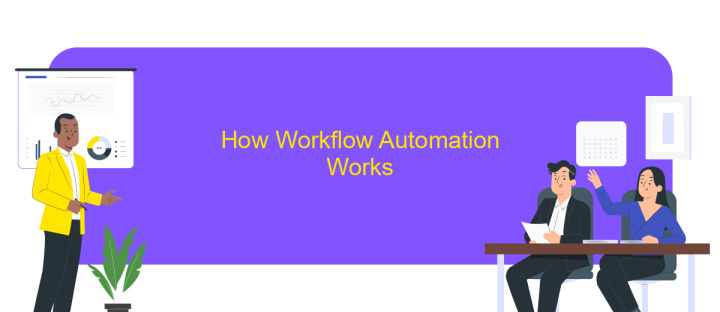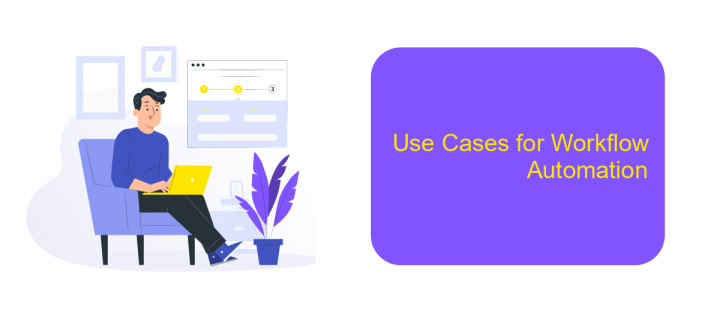How Does Workflow Automation Help You
Workflow automation is revolutionizing the way businesses operate by streamlining processes, reducing manual tasks, and enhancing overall efficiency. By leveraging advanced technologies, companies can automate repetitive tasks, minimize human error, and free up valuable time for more strategic activities. This article explores the myriad benefits of workflow automation and how it can significantly improve productivity and operational effectiveness in various industries.
Introduction
In today's fast-paced business environment, efficiency and productivity are paramount. Workflow automation has emerged as a vital tool for organizations seeking to streamline operations and reduce manual tasks. By automating repetitive processes, businesses can save time, minimize errors, and focus on more strategic initiatives.
- Increased efficiency by eliminating manual tasks
- Enhanced accuracy and reduced human error
- Improved consistency and standardization of processes
- Better scalability and flexibility in operations
- Real-time data tracking and analytics
Services like ApiX-Drive make it easier than ever to integrate various applications and automate workflows seamlessly. By connecting different platforms, ApiX-Drive enables businesses to synchronize data and automate tasks without the need for complex coding. This flexibility allows organizations to adapt quickly to changing needs and maintain a competitive edge in the market.
Key Benefits of Workflow Automation

Workflow automation significantly enhances efficiency by streamlining repetitive tasks, allowing employees to focus on more strategic activities. By automating routine processes, organizations can reduce human errors and improve accuracy, leading to higher quality outputs. This not only saves time but also reduces operational costs, making the business more profitable in the long run.
Another key benefit is the seamless integration of various tools and applications. Services like ApiX-Drive facilitate this by enabling easy setup of integrations without requiring extensive technical knowledge. This ensures that different systems within an organization can communicate effectively, providing a cohesive workflow. Additionally, workflow automation improves transparency and accountability, as tasks are tracked and monitored in real-time, ensuring that deadlines are met and responsibilities are clearly defined.
How Workflow Automation Works

Workflow automation streamlines business processes by replacing manual tasks with automated actions, reducing errors, and saving time. It involves using software tools to create, execute, and manage workflows, ensuring tasks are completed efficiently and consistently.
- Define the workflow: Identify the tasks, steps, and conditions involved in the process.
- Select automation tools: Choose appropriate software, such as ApiX-Drive, that can integrate with your existing systems.
- Configure integrations: Set up connections between different applications to enable seamless data transfer and task execution.
- Test the workflow: Run simulations to ensure the automated process works as intended.
- Deploy and monitor: Implement the automated workflow and continuously monitor its performance for improvements.
By automating workflows, businesses can enhance productivity, improve accuracy, and free up employees to focus on more strategic tasks. Tools like ApiX-Drive make it easy to connect various services and automate complex processes, ensuring a smooth and efficient operation.
Use Cases for Workflow Automation

Workflow automation can significantly enhance the efficiency of various business processes by reducing manual intervention and minimizing errors. It offers a streamlined approach to managing repetitive tasks, allowing employees to focus on more strategic activities.
One of the primary use cases for workflow automation is in the area of customer relationship management (CRM). By automating tasks such as data entry, follow-up emails, and customer segmentation, businesses can ensure a more personalized and timely interaction with their clients.
- Human Resources: Automate onboarding processes, leave requests, and performance reviews.
- Finance: Streamline invoice processing, expense reporting, and budget approvals.
- Marketing: Schedule social media posts, manage email campaigns, and track lead generation.
- IT Services: Automate ticketing systems, software updates, and system monitoring.
- Sales: Automate lead scoring, follow-ups, and contract approvals.
For businesses looking to integrate various applications and services seamlessly, tools like ApiX-Drive can be invaluable. ApiX-Drive enables easy integration and automation across different platforms, ensuring that data flows smoothly between systems, thereby enhancing overall operational efficiency.
- Automate the work of an online store or landing
- Empower through integration
- Don't spend money on programmers and integrators
- Save time by automating routine tasks
Conclusion
In conclusion, workflow automation stands as a transformative tool for businesses aiming to enhance efficiency and reduce operational costs. By automating repetitive tasks, companies can allocate their human resources towards more strategic activities, fostering innovation and growth. The streamlined processes not only save time but also minimize errors, ensuring a higher quality of output and improved customer satisfaction.
Moreover, leveraging platforms like ApiX-Drive can significantly simplify the integration of various applications and services within your workflow. This ensures seamless data transfer and communication between different systems, further optimizing your business operations. As a result, workflow automation, bolstered by effective integration tools, empowers businesses to stay competitive in an increasingly dynamic market landscape.
FAQ
How does workflow automation improve efficiency?
What types of tasks can be automated?
How do I get started with workflow automation?
Can workflow automation integrate with my existing software?
What are the cost benefits of workflow automation?
Apix-Drive will help optimize business processes, save you from a lot of routine tasks and unnecessary costs for automation, attracting additional specialists. Try setting up a free test connection with ApiX-Drive and see for yourself. Now you have to think about where to invest the freed time and money!


